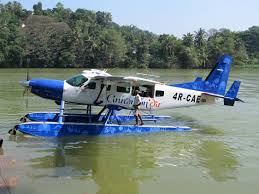
Introduction
Sri Lanka, an island nation in South Asia, has been a focal point of international interest due to its tumultuous political and economic landscape over the past few years. The country faced a severe economic crisis in 2022, leading to widespread protests and a change in leadership. This backdrop sets the stage for 2023, which is critical for Sri Lanka’s recovery and stability amidst ongoing challenges.
Economic Challenges and Recovery Efforts
Following the economic turmoil that peaked in 2022, marked by shortages of essential goods and a looming debt crisis, Sri Lanka has embarked on a multi-faceted recovery plan. The government, under President Ranil Wickremesinghe, has sought assistance from the International Monetary Fund (IMF). In March 2023, the IMF approved a $2.9 billion loan program aimed at stabilizing the economy and restoring fiscal prudence. As part of this program, Sri Lanka is tasked with implementing structural reforms, which include reducing the deficit, increasing tax revenues, and addressing public expenditure.
In addition to IMF support, Sri Lanka has received aid from several countries and international organizations. The World Bank and Asian Development Bank have pledged additional financial assistance to help the country navigate its current fiscal landscape. However, these efforts come with stringent conditions that require the government to adopt effective economic governance practices.
Social Impact
The social fabric of Sri Lanka has also been deeply affected by the economic crisis. Rising food prices and inflation have significantly impacted the living standards of ordinary citizens. In 2023, the government has been focusing on social safety net programs to support vulnerable populations facing food insecurity. Reports indicate that approximately 6 million people are in need of humanitarian assistance, highlighting the urgency for effective governmental action to address poverty and malnutrition.
Conclusion
As Sri Lanka navigates its path to recovery in 2023, the focus remains on balancing economic stability and social well-being. While the support from international lenders and organizations brings hope, the effectiveness of governance and policy implementation will determine the country’s long-term recovery. Observers are cautiously optimistic that if measures are taken to restore public trust and economic health, Sri Lanka can emerge stronger from its recent challenges. In conclusion, the outcome of Sri Lanka’s recovery journey will have lasting implications not just for its citizens, but also for the regional stability of South Asia.



